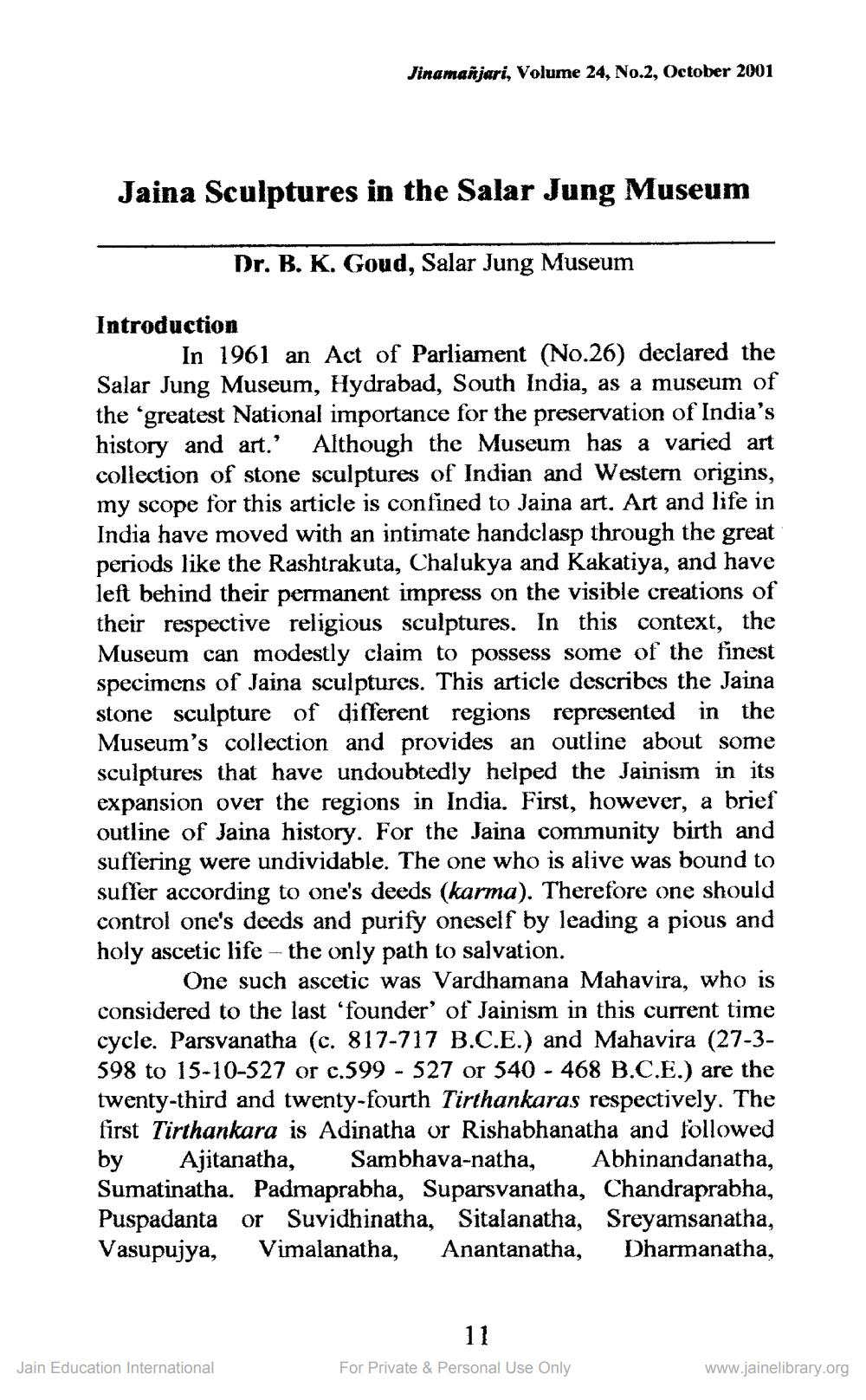________________
Jinamañjari, Volume 24, No.2, October 2001
Jaina Sculptures in the Salar Jung Museum
Dr. B. K. Goud, Salar Jung Museum
Introduction
In 1961 an Act of Parliament (No.26) declared the Salar Jung Museum, Hydrabad, South India, as a museum of the 'greatest National importance for the preservation of India's history and art.' Although the Museum has a varied art collection of stone sculptures of Indian and Western origins, my scope for this article is confined to Jaina art. Art and life in India have moved with an intimate handclasp through the great periods like the Rashtrakuta, Chalukya and Kakatiya, and have left behind their permanent impress on the visible creations of their respective religious sculptures. In this context, the Museum can modestly claim to possess some of the finest specimens of Jaina sculptures. This article describes the Jaina stone sculpture of different regions represented in the Museum's collection and provides an outline about some sculptures that have undoubtedly helped the Jainism in its expansion over the regions in India. First, however, a brief outline of Jaina history. For the Jaina community birth and suffering were undividable. The one who is alive was bound to suffer according to one's deeds (karma). Therefore one should control one's deeds and purify oneself by leading a pious and holy ascetic life - the only path to salvation.
One such ascetic was Vardhamana Mahavira, who is considered to the last 'founder' of Jainism in this current time cycle. Parsvanatha (c. 817-717 B.C.E.) and Mahavira (27-3598 to 15-10-527 or c.599 - 527 or 540 - 468 B.C.E.) are the twenty-third and twenty-fourth Tirthankaras respectively. The first Tirthankara is Adinatha or Rishabhanatha and followed by Ajitanatha, Sambhava-natha, Abhinandanatha, Sumatinatha. Padmaprabha, Suparsvanatha, Chandraprabha, Puspadanta or Suvidhinatha, Sitalanatha, Sreyamsanatha, Vasupujya, Vimalanatha, Anantanatha, Dharmanatha,
Jain Education International
11
For Private & Personal Use Only
www.jainelibrary.org




